An Analysis of Medication Rules of Chinese Medicine for Restless Legs Syndrome Based on Data Mining
CHEN Shu-jiao (陳淑嬌), ZHOU Xiao-li (周小莉)
Hubei University of Chinese Medicine, Wuhan 430060, China
ABSTRACT Objective:Based on data mining, to explore the medication rules of Chinese medicine for the treatment of restless legs syndrome (RLS).Methods:The CNKI, WANFANG, and VIP were taken as data sources, and "restless legs syndrome, RLS" as the key words, and "Chinese medicine, Chinese materia medica, traditional Chinese medicine (TCM), traditional Chinese and Western medicine" as sub key words, the data was extracted from the journals and literature related to the treatment of RLS by TCM from the establishment of the database to 2020, and data mining techniques (frequency analysis, cluster analysis, association rules) were used to analyze the core drugs and drug pair (group) rules.Results:A total of 87 prescriptions met the requirements of this study, involving 142 Chinese herbal medicines. The top 5 Chinese herbal medicines with a higher frequency of use were Radix Paeoniae Alba,Radix Glycyrrhizae,Radix Angelicae Sinensis,Fructus Chaenomelisand Radix Astragali seu Hedysari. The four Qi (氣) of the medicine were mainly warm and neutral, the five flavors were mainly sweet, bitter, and pungent. The main channels of the meridian were mainly the liver meridian, spleen meridian and heart meridian. The medication categories were mainly tonifying deficiency herbs, blood activating and removing blood stasis herbs, and eliminating wind and dampness herbs. The association rule analysis yielded 24 Chinese medicine combinations with high support, and the hierarchical cluster analysis yielded a total of 5 clusters.Conclusion:TCM treatment of RLS is based on tonifying deficiency herbs, especially to replenish Qi and blood throughout the course of the disease, supplemented by herbs for promoting blood circulation and removing blood stasis, and herbs for eliminating wind and dampness, as well as combined with herbs for reliving superficies and herbs for calming the liver to stop the wind.
KEYWORDS Restless legs syndrome; Data mining; Association rules; Medication rule
Restless legs syndrome (RLS) is a common sensorimotor disease of the nervous system, which is mainly manifested as a strong desire to move both lower limbs, accompanied by unspeakable discomfort in both lower limbs with a series of painful conscious symptoms such as numbness, soreness,itching, ant creeper sensation, etc.. The symptoms can be relieved after the activity[1]. This disease has obvious day and night regularity, which is light in the day and serious at the night. This disease often makes it difficult for patients to fall asleep, affects the patient's sleep quality, and is prone to abnormal mental symptoms such as anxiety and depression in the long-term, and brings serious psychological pressure and burden to patients.
The exact pathogenesis of RLS is not yet clear.At present, western medicines mostly use dopamine drugs, α2δ calcium channel agonists, iron agents,and opioids to improve clinical symptoms[2], but western medicine alone has shortcomings such as easy repetition and instability. Traditional Chinese medicine (TCM) adheres to the essence of the"holistic concept" and "syndrome differentiation and treatment", and exerts outstanding advantages in the treatment of RLS. In recent years, there have been more and more reports in the literature that the quality of life of RLS patients has been greatly improved by the treatment of TCM. However,the selection of herbs varies greatly due to the differences in the preferences of doctors and the principle of prescription selection. For this reason,this paper conducted a comprehensive analysis of the domestic literature on the treatment of RLS in TCM in the past 30 years, and used data mining related techniques to explore the rule of medication,in order to provide certain data support for the treatment of RLS in TCM.
MATERIALS AND METHODS
Data Source
The "restless legs syndrome, RLS" were used as the key words, with "Chinese medicine, traditional Chinese medicine, Chinese materia medica,traditional Chinese and Western medicine" as the sub keywords, and the time was set from database establishment to July 30, 2020. The CNKI, Wanfang,and VIP databases were searched.
Inclusion and Exclusion Criteria
Inclusion criteria: ①The medica case was clearly diagnosed as "restless legs syndrome" or"RLS". ② There is oral administration of Chinese medicine compound with specific composition,and the Chinese medicine compound conforms to the theory of TCM, with complete ingredients and clear indications, and the number of clinical cases was 10 or more. ③It is determined in the literature that the prescription is effective and the symptoms after the medication are improved. ④There is only one document in the study of the same Chinese medicine compound.
Exclusion criteria: ①Patients with RLS secondary to other diseases. ②The type of literature is reviews, case reports, experience introductions,animal experiments, etc. rather than clinical research. ③The treatment of literature is nonoral administration of Chinese medicine and other external treatments.
Data Processing
After screening the retrieved documents according to the criteria for inclusion and exclusion criteria, 87 compound prescriptions were obtained,involving 142 kinds of Chinese medicines, and the cumulative frequency of 852 times. According to thePharmacopoeia of The People's Republic of China《中華人民共和國藥典》2020 edition[3]andTraditional Chinese Materia Medica《中藥學(xué)》[4],the names, classifications, properties, flavors, and channel tropism of the above-mentioned Chinese medicines were unified. For the Chinese medicines that use processed products, the nature and flavor of the meridian or the toxicity changed were for additional statistics, such as "Radix Rehmanniae Recens" and "Radix Rehmanniae Preparata".
Statistical Methods
The above-mentioned Chinese medicines were inputted into Excel 2013 one by one to establish a database for the treatment of RLS with Chinese medicines, and conduct statistical analysis of the frequency of use of the types of medicines included,and used SPSS modeler 14.1 and SPSS Statistics 22.0 for association rule analysis and cluster analysis.
RESULTS
Usage of Single Chinese Medicine
Among 87 prescriptions, 142 kinds of Chinese medicines were involved, with a cumulative frequency of 852 times. Among them,Radix Paeoniae Albawas used most frequently, followed byRadix Glycyrrhizaeand the top 20 single Chinese medicines used were shown in Table 1.
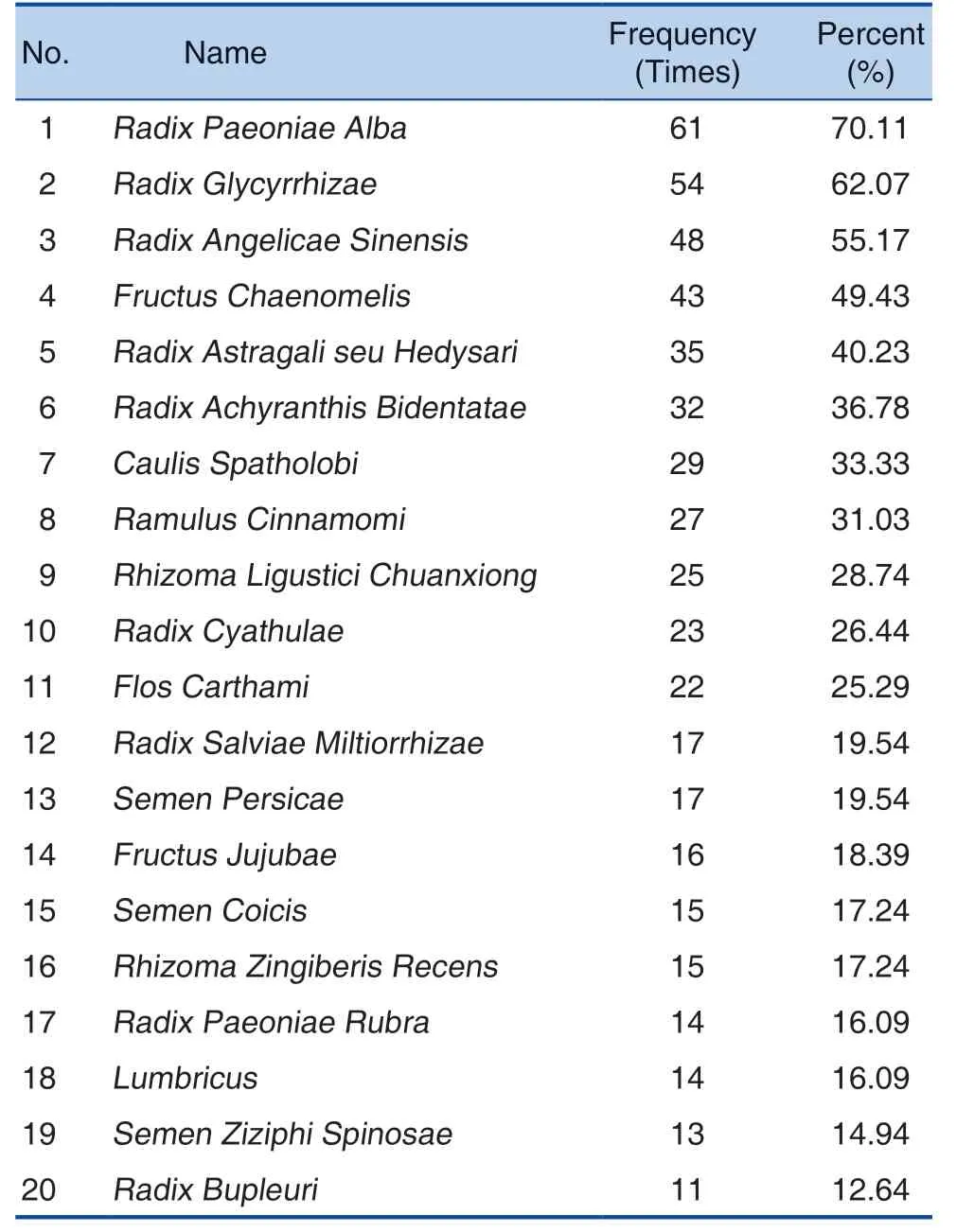
Table 1. High-frequency Chinese Medicines for the Treatment of RLS (top 20)
Types of Chinese Medicines
The types of Chinese medicines with a frequency of use2 was calculated, with a total of 792 medications. According to the efficacy, they were classified into 15 types of Chinese medicines,among which the top 3 types of frequency were tonifying deficiency herbs (252 times, 31.82%),activating blood circulation and resolving blood stasis herbs (173 times, 21.84%) and eliminating wind-damp herbs (93 times, 11.74%).
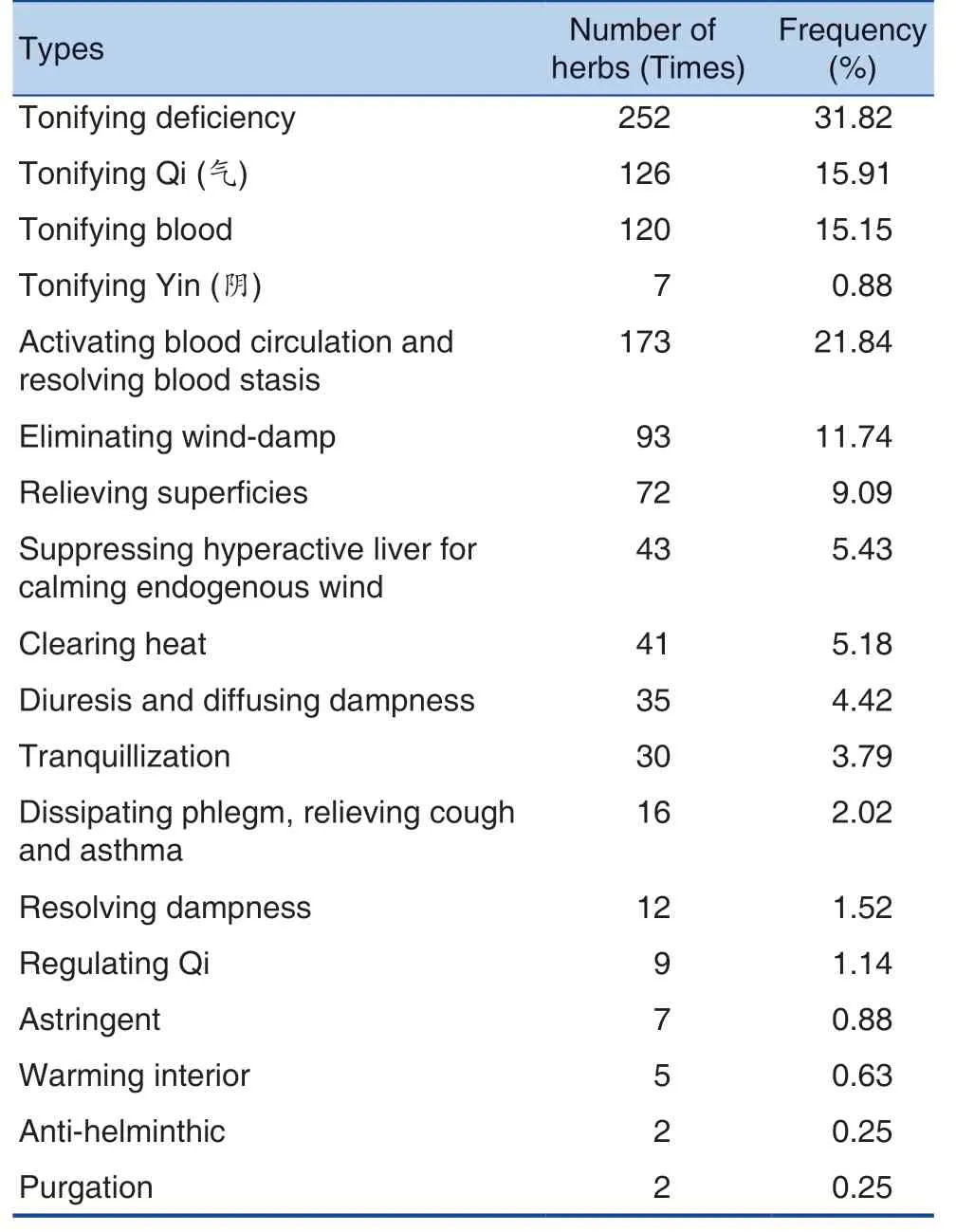
Table 2. Types of Chinese Medicines Commonly Used in the Treatment of RLS
Nature, Flavor and Meridian Tropism of Chinese Medicine
The statistical analysis for nature, flavor and meridian tropism of Chinese medicine with the frequency of use2 showed that the four Qi of the Chinese medicine was mostly warm and followed by neutral. The five flavors were mostly sweet, bitter and pungent. The meridian tropism indicates that the treatment of RLS with Chinese medicine is mainly attributed to the liver, spleen and heart meridians,followed by the lung meridians and kidney meridians,and the stomach and bladder meridians were used as adjuvant therapy.
Association Rule Analysis of High-Frequency Medicines
The SPSS Modeler 14.1 statistical software was used to analyze association rules of highfrequency Chinese medicines (use frequency10).The Apriori modeling was used to further explore the compatibility relationship between different Chinese medicines. The support degree was set to 20, and confidence coeffciient to 80, the maximum number of antecedents to 5, and conditions such as promotion1 were used to mine potential Chinese medicine combinations in commonly used prescriptions, and a total of 24 core Chinese medicine combinations were obtained. The statistical results were shown in Table 3. The "networked display" of high-frequency Chinese medicines (use frequency10) was shown in Figure 2.
Cluster Analysis of High-Frequency Chinese Medicines
By using SPSS 22.0 classification-systematic clustering analysis, cluster analysis of the above 25 high-frequency Chinese medicines (use frequency 10) was performed. The inter-group link, and the interval in the metric were used to select Pearson correlation, and the clustering was selected as a variable. The scope of the scheme in the statistics was generally set to 2-10 categories. Combined with the main therapeutic effects of Chinese medicines, it was considered appropriate that the above-mentioned Chinese medicines grouped into five categories after analysis. Among them, first cluster type:Radix Salviae Miltiorrhizae,SemenCoicis,Fructus Chaenomelis,Radix Achyranthis Bidentatae,Caulis Spatholobi; second cluster type:Radix Paeoniae Alba,Radix Glycyrrhizae,Semen Ziziphi Spinosae,Poria,Concha Ostreae,Radix Rehmanniae Preparata; third cluster type:Radix Bupleuri,Radix Codonopsis,Fructus Jujubae,Rhizoma Zingiberis Recens,Ramulus Cinnamomi;fourth cluster type:Radix Cyathulae,Herba Lycopodii; fifth cluster type:Flos Carthami,Semen Persicae,Rhizoma Ligustici Chuanxiong,Radix Paeoniae Rubra,Radix Angelicae Sinensis,Radix Astragali seu Hedysari,Lumbricus. Figure 3 showed the cluster distribution of herbs.

Figure 1. Analysis of Nature, Flavor and Meridian Tropism of Chinese Medicine in the Treatment of RLS
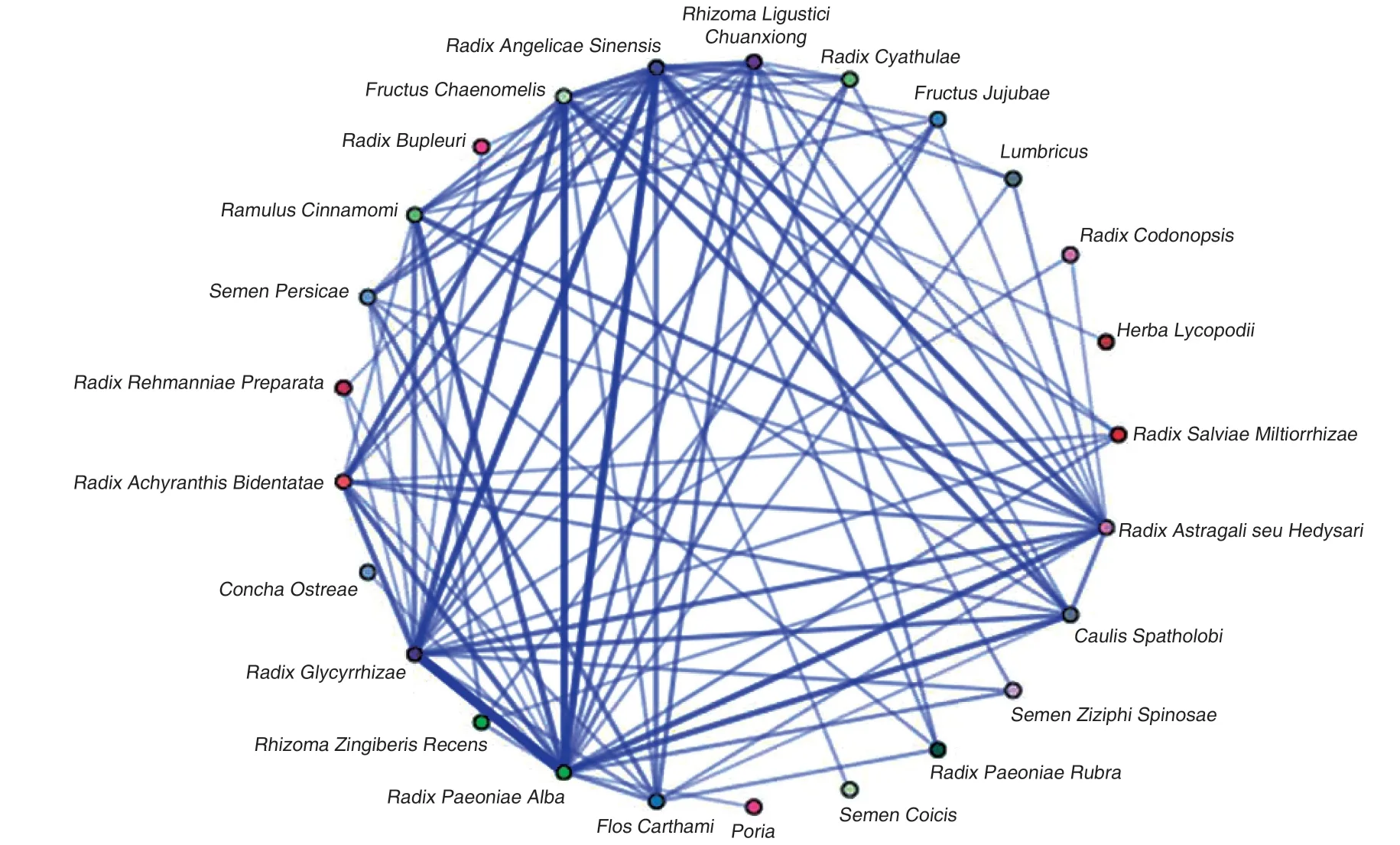
Figure 2. Network Diagram of Common Chinese Medicines in RLS
Table 3. Statistical Analysis of High-Frequency Chinese Medicine Association Rules (Use Frequency 10)
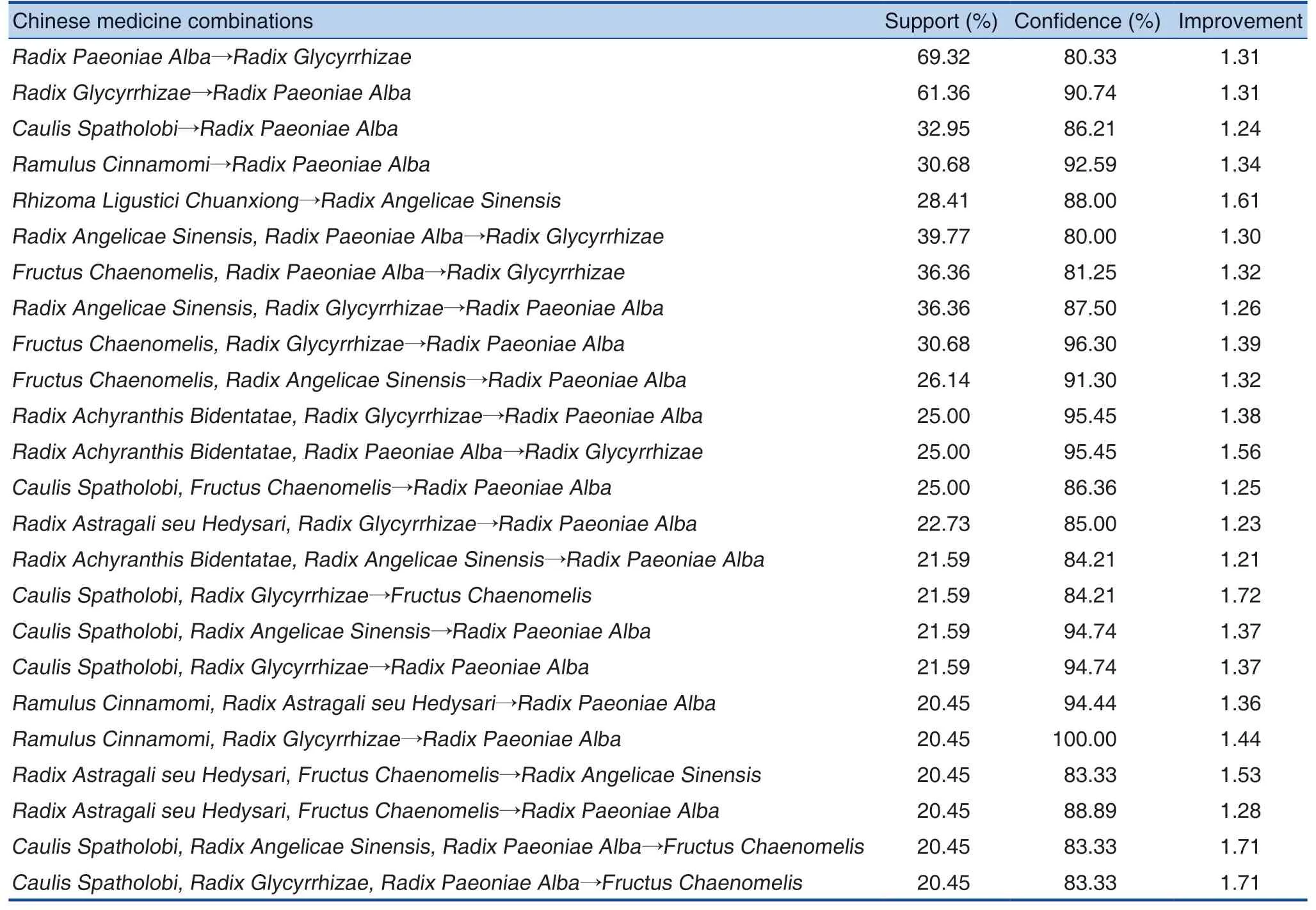
Table 3. Statistical Analysis of High-Frequency Chinese Medicine Association Rules (Use Frequency 10)
Chinese medicine combinations Support (%) Confidence (%) Improvement Radix Paeoniae Alba→Radix Glycyrrhizae 69.32 80.33 1.31 Radix Glycyrrhizae→Radix Paeoniae Alba 61.36 90.74 1.31 Caulis Spatholobi→Radix Paeoniae Alba 32.95 86.21 1.24 Ramulus Cinnamomi→Radix Paeoniae Alba 30.68 92.59 1.34 Rhizoma Ligustici Chuanxiong→Radix Angelicae Sinensis 28.41 88.00 1.61 Radix Angelicae Sinensis, Radix Paeoniae Alba→Radix Glycyrrhizae 39.77 80.00 1.30 Fructus Chaenomelis, Radix Paeoniae Alba→Radix Glycyrrhizae 36.36 81.25 1.32 Radix Angelicae Sinensis, Radix Glycyrrhizae→Radix Paeoniae Alba 36.36 87.50 1.26 Fructus Chaenomelis, Radix Glycyrrhizae→Radix Paeoniae Alba 30.68 96.30 1.39 Fructus Chaenomelis, Radix Angelicae Sinensis→Radix Paeoniae Alba 26.14 91.30 1.32 Radix Achyranthis Bidentatae, Radix Glycyrrhizae→Radix Paeoniae Alba 25.00 95.45 1.38 Radix Achyranthis Bidentatae, Radix Paeoniae Alba→Radix Glycyrrhizae 25.00 95.45 1.56 Caulis Spatholobi, Fructus Chaenomelis→Radix Paeoniae Alba 25.00 86.36 1.25 Radix Astragali seu Hedysari, Radix Glycyrrhizae→Radix Paeoniae Alba 22.73 85.00 1.23 Radix Achyranthis Bidentatae, Radix Angelicae Sinensis→Radix Paeoniae Alba 21.59 84.21 1.21 Caulis Spatholobi, Radix Glycyrrhizae→Fructus Chaenomelis 21.59 84.21 1.72 Caulis Spatholobi, Radix Angelicae Sinensis→Radix Paeoniae Alba 21.59 94.74 1.37 Caulis Spatholobi, Radix Glycyrrhizae→Radix Paeoniae Alba 21.59 94.74 1.37 Ramulus Cinnamomi, Radix Astragali seu Hedysari→Radix Paeoniae Alba 20.45 94.44 1.36 Ramulus Cinnamomi, Radix Glycyrrhizae→Radix Paeoniae Alba 20.45 100.00 1.44 Radix Astragali seu Hedysari, Fructus Chaenomelis→Radix Angelicae Sinensis 20.45 83.33 1.53 Radix Astragali seu Hedysari, Fructus Chaenomelis→Radix Paeoniae Alba 20.45 88.89 1.28 Caulis Spatholobi, Radix Angelicae Sinensis, Radix Paeoniae Alba→Fructus Chaenomelis 20.45 83.33 1.71 Caulis Spatholobi, Radix Glycyrrhizae, Radix Paeoniae Alba→Fructus Chaenomelis 20.45 83.33 1.71
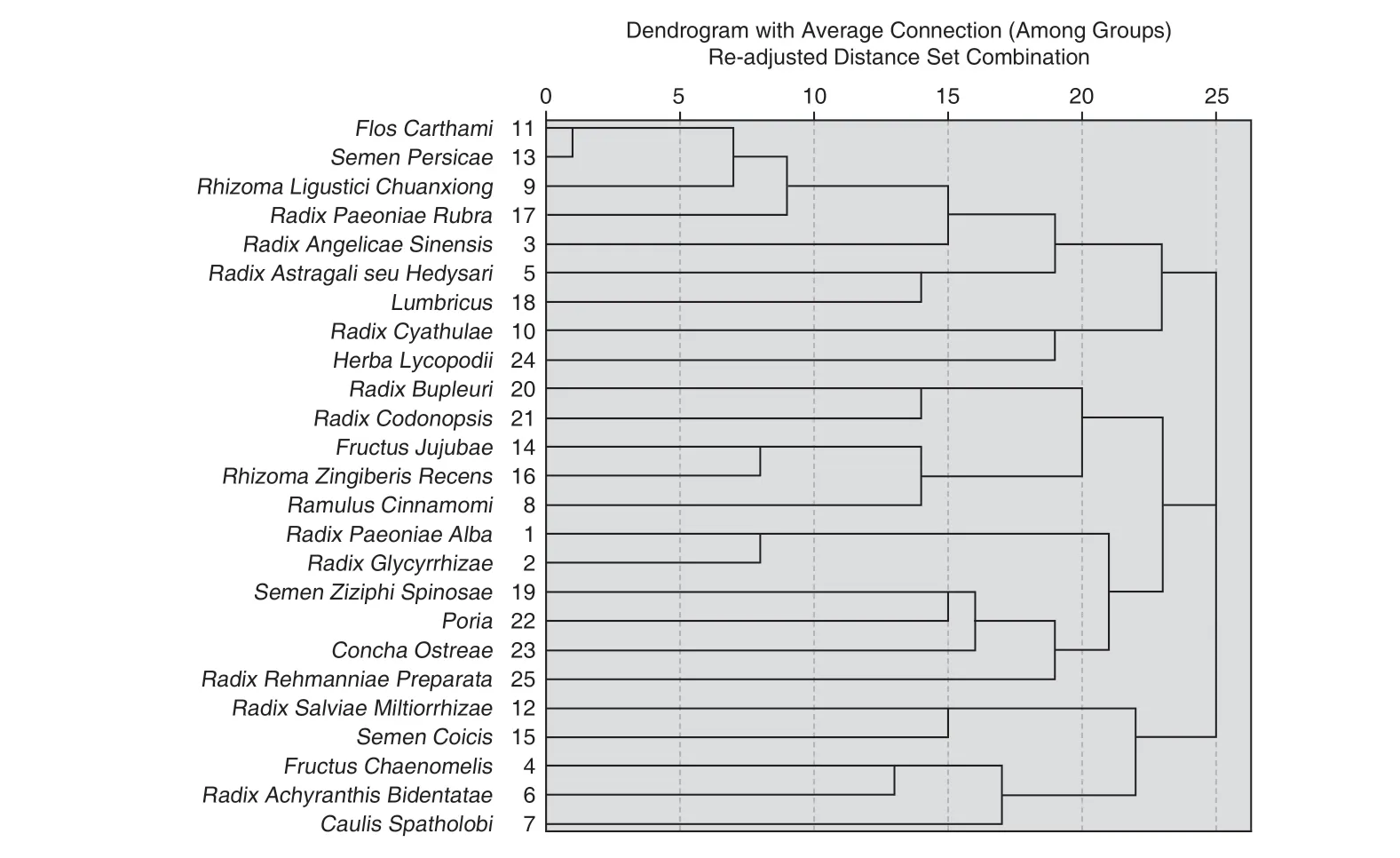
Figure 3. Cluster Analysis Pedigree Diagram of Chinese Medicines Commonly Used in the Treatment of RLS
DISCUSSION
RLS has no exact name in TCM. According to the analysis of its incidence and clinical characteristics, it belongs to the category of diseases such as "Bi syndrome (痹證)" and "spasmodic disease" in TCM theory. It is mostly mentioned in medical books of the past. For example,Treatise on Cold Pathogenic and Miscellaneous Diseases(《傷寒雜病論》) records: "Blood obstruction is caused by both Yin (陰) and Yang (陽). Cunkou pulse (寸口脈) is weak, and tight in Chi. The symptom is limited body movement, like paralysis."Ming Xueji'sInternal Medicine Abstract(《內(nèi)科摘要》) records: "Insufficient sleep at night, sourness and heat in feet. Long-term without sleep will cause symptoms in legs, and with spasm feelings,which leads to frequent movement of two legs, and fatigue". The basic pathogenesis of this disease belongs to deficient root and excessive superficial.Root cause is the deficiency of Qi and blood.Blood cannot nourish meridians and the meridians are not nourishing. The manifestations are blood stasis blocking the collaterals, or mixed wind-cold dampness. The meridians are blocked, so the limbs are restless. Therefore, the main treatment of TCM for RLS is to replenish Qi and activate blood.
In this data mining, by analyzing the ranking of the application frequency of Chinese medicines from high to low, the top 5 areRadix Paeoniae Alba,Radix Glycyrrhizae,Radix Angelicae Sinensis,Fructus Chaenomelis, andRadix Astragali seu Hedysari.Radix Paeoniae Albanourishes the blood and restrains Yin, softens the liver and relieves pain.Medical Enlightenment(《醫(yī)學(xué)心悟》) records: "Regulate the Qi to harmonize the blood, regulate the blood to harmonize the Qi and relieve the Qi." As the most frequently used single Chinese medicine,Radix Paeoniae Albahas antiinflammatory, analgesia, anticonvulsant, immune regulation and other pharmacological effects[3], soRadix Paeoniae Albacan play a good therapeutic effect on RLS. RLS has a long course of disease,and it is difficult to heal with prolongation, but the fundamental reason is the deficiency of healthy Qi.Therefore,Radix Glycyrrhizaeis not only used as an adjuvant to reconcile various herbs, but also with its effects on tonifying the spleen and benefiting Qi,relieving pain and others.Radix Angelicae Sinensisnourishes blood, activates blood and relieves pain, and removes blood stasis without hurting Yin and blood. As the so-called, blood deficiency can be nourished, and blood stasis can be activated.Fructus Chaenomelisrelaxes tendons and activates collaterals, dispels dampness and relieves numbness. It is an important medicine for treating tendons and meridians blockage.Radix Astragali seu Hedysarireplenishes Qi and invigorates the spleen, generates fluid and nourishes the blood,and can prevent stagnation and unblocking arthritis.The use ofRadix Angelicae Sinensiscan enhance the effects on nourishing Qi and generating blood,activating blood circulation and relieving pain.
The types of Chinese medicines for the treatment of RLS are mainly tonifying deficiency herbs, activating blood circulation and removing blood stasis herbs, supplemented by herbs such as dispelling wind and removing dampness,calming the liver and relieving wind, and relieving the exterior syndrome, which are in line with the etiology and pathogenesis of RLS and the treatment principles and treatment methods. It also reflects the principle of reenforcing the healthy Qi and not forgetting to dispel pathogens, replenishing deficiencies and not forgetting to expel excess. The medicinal properties are mainly warm and flat, while the medication is more moderate. The medicinal taste is mostly sweet and bitter. The sweet taste can nourish, harmonize, and relieve the pain.Therefore, the sweet medicine is used to nourish and harmonize the middle, and relieve pain. Bitter medicine can dispel, dry, and strengthen to dispel the body's fire, dry the body's dampness, and strengthen the body's Yin.
From the statistical results of Chinese medicines meridian tropism in this study, it is found that the liver meridian, spleen meridian and heart meridian are the main medicines in the treatment of RLS. In TCM, meridian tropism has the meaning of positioning. The liver is rooted in the hands and full in the tendons. The spleen is rooted in the lips and perilabial zone, and full in the muscles. RLS disease is located in the tendons,muscles, which is governed by the liver and the spleen. The disease is also closely related to the heart meridian. The heart governs the blood, and the blood runs normally to nourish the body. The heart also hides the spirits, and the clear mind will calm the body. The mind, consciousness, thinking,emotion and other activities can be maintained normally when the function of the heart is normal.The heart stores the spirit and governs the meridian. The liver stores the blood and governs to relieve drainage. The spleen controls the blood to transport and transform. The three are the pivots for the regulation of Qi and blood.Spiritual Pivot Basic State of Spirit(《靈樞 · 本神篇》) records:"The heart controls blood vessels and the vessels house the Spirit...the liver stores blood and the blood houses the soul". "Thinking comes from the heart, and the spleen responds to it." Therefore,for liver, spleen, and heart dysfunctions, in addition to symptoms of limbs, also have abnormal mental symptoms such as anxiety and depression.
The relatively high degree of support in the association rule analysis of Chinese medicine combinationsRadix Paeoniae Alba-
Radix Glycyrrhizae,Radix Angelicae Sinensis-Radix Paeoniae Alba-Radix Glycyrrhizae,Fructus Chaenomelis-Radix Paeoniae Alba-Radix Glycyrrhizae,Caulis Spatholobi-Radix Paeoniae Alba, and the statistical results of the frequency of single medicinal herbs are highly consistent. Among them,Radix Paeoniae AlbaandRadix Glycyrrhizaehave the highest support. Its compatibility is ZHANG Zhong-jing's famous prescription of Shaoyao Gancao Decoction (芍藥甘草湯), fromTreatise on Cold Pathogenic Diseases(《傷寒論》): "Floating pulse of typhoid fever, spontaneous sweating,frequent urination, upset, mild aversion to cold, foot spasms... Prepare Ganjiang Gancao Decoction...For patients with warm feet, prepare Shaoyao Gancao Decoction, and the feet stretch." In the formula,Radix Paeoniae Albais sour and cold to nourish Yin and astringe nutrient Qi, nourish blood and soften the liver, relieving spasm and pain, so that the Yin fluid is restored, the muscles and veins are nourished, and the spasms are eliminated.Pharmacological studies have also proved that it has a variety of pharmacological effects such as antiinflammatory, analgesic, sedation, relief of smooth muscle spasm, and immune enhancement[5].
Cluster analysis is of great significance for mining the potential diagnosis and treatment rules and differentiation and treatment ideas of contemporary Chinese medicine treatment of RLS. Based on the results of systematic clustering analysis and knowledge of TCM, this study divided Chinese medicines used more than 10 times into 5 categories. First clustering herbs are compatible with blood-activating and stasis-removing herbs, eliminating wind-damp herbs, and diuresis and diffusing dampness herbs, specifically targeting "stasis", "wind"and "dampness" and other pathogenic factors.Among them,Semen Coicisis for diuresis and diffusing dampness, and also invigorating the spleen and eliminating the Bi, achieving eliminate pathogens without damaging healthy Qi. In the second clustering herbs, the tonifying deficiency herbs, activating blood circulation and resolving blood stasis herbs, and suppressing hyperactive liver for calming endogenous wind herbs fit the etiology and pathogenesis of RLS, and promote blood circulation while replenishing deficiency.Among them,Semen Ziziphi Spinosaenourishes the heart and supplements the liver, calms the heart and the mind."Changsha Yao Jie(《長沙藥解》)[6]records: "calms the heart and gallbladder,eliminates annoyance, astringes the soul and improves sleep."Concha Ostreaesuppresses Yang and nourishes Yin, with mind-tranquilizing.Changsha Yao Jie[6]records: "All the syndromes of heart palpitations, nocturnal emission and night sweats are for treatment." Adding these two herbs will peace mind, no disturbing sleep at night, and calm down anxiety. For the third clustering herbs,superficies-relieving herbs and tonifying deficiency herbs can consolidate the surface without leaving the pathogen, dispel the pathogen without hurting the healthy Qi, and take both the pathogen and the healthy Qi into consideration. For example,the commonly used prescriptions Huangqi Guizhi Wuwu Decoction (黃芪桂枝五物湯) benefits Qi and warms meridian, harmonizes blood and smooth Bi. In the fourth clustering herbs,Radix Cyathulaeshowes removes blood stasis and smooth the meridians, and activates joints. Pharmacological studies have shown that it has a wide range of pharmacological effects such as regulating blood viscosity, improving microcirculation, and enhancing immunity[7].Herba Lycopodiidispels wind and dampness, relaxes tendons and collaterals.Pharmacological studies have shown that it has multiple pharmacological effects such as antiinflammatory, analgesic, antibacterial, inhibition of acetylcholinesterase activity, anti-platelet aggregation, immune regulation and antioxidant effects[8]. In the fifth clustering herbs,Flos Carthami,Semen Persicae,Rhizoma Ligustici Chuanxiong,Radix Paeoniae Rubra,Lumbricusare same with Taohong Siwu Decoction (桃紅四物湯).Radix Angelicae Sinensis,Radix Astragali seu Hedysariare same with Danggui Buxue Decoction (當(dāng)歸補(bǔ)血湯), which can invigorate Qi and generate blood,promote blood circulation and remove blood stasis.It is can be seen that tonifying the deficiency,activating blood circulation and resolving stasis is the key to treating this disease.
Through the summary and statistics of clinical research literature on the treatment of RLS with Chinese medicine, and the use of association rules,cluster analysis and other methods, it is found that Chinese medicine treatment of RLS is mostly based on the compatibility principles of invigorating Qi and nourishing blood, promoting blood circulation and removing blood stasis, dispelling wind and removing dampness, calming the liver and calming the mind, and some potential herb groups,reflecting the core pathogenesis of deficiency of Qi and blood, stagnation of blood stasis, wind and dampness blockage, deficient root and excessive superficial. The clinical medication can focus onRadix Paeoniae Alba,Radix Glycyrrhizae,Radix Angelicae Sinensis,Fructus Chaenomelis,Radix Astragali seu Hedysari,Caulis Spatholobi. This study uses CNKI, WANFANG, and VIP databases as data sources, and covers the common clinical prescriptions for the treatment of RLS with Chinese medicine. Therefore, to a certain extent, this result can reflect the overall trend of clinical treatment of RLS and can give clinicians some appropriate theoretical reference opinions, which provides certain data support for the further research and development of the treatment of RLS by Chinese medicine.
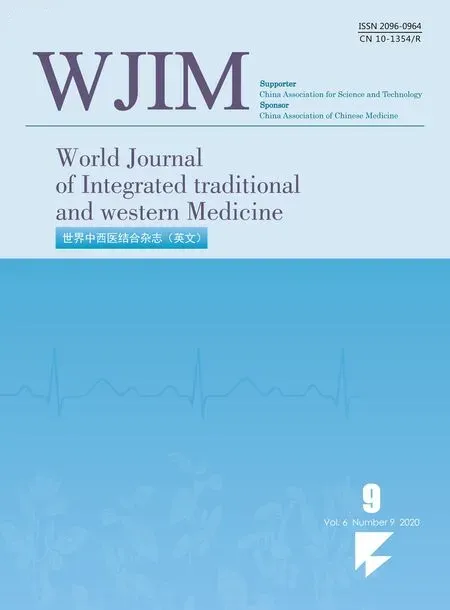 World Journal of Integrated Traditional and Western Medicine2020年9期
World Journal of Integrated Traditional and Western Medicine2020年9期
- World Journal of Integrated Traditional and Western Medicine的其它文章
- Evaluation of the Curative Effect of "Xingnao Kaiqiao"Acupuncture Based on Brunnstrom Staging on Upper Limb and Hand Motor Function in the Recovery Period after Stroke
- Clinical Observation on the Treatment of Insomnia in Germany with Deficiency of Heart and Spleen by the Ear Bean Therapy
- World Journal of Integrated Traditional and Western Medicine Instruction for Authors
